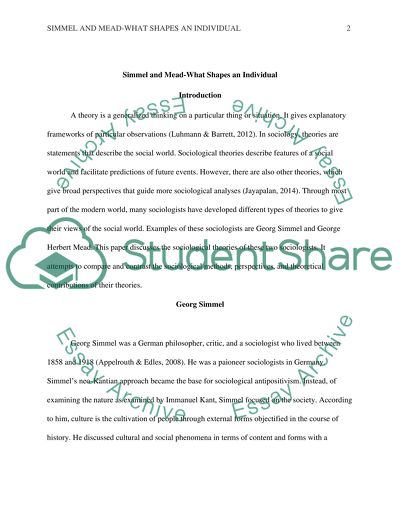Cite this document
(“Simmel and Mead-What Shapes an Individual Research Paper”, n.d.)
Retrieved from https://studentshare.org/sociology/1661025-simmel-and-mead-what-shapes-an-individual
Retrieved from https://studentshare.org/sociology/1661025-simmel-and-mead-what-shapes-an-individual
(Simmel and Mead-What Shapes an Individual Research Paper)
https://studentshare.org/sociology/1661025-simmel-and-mead-what-shapes-an-individual.
https://studentshare.org/sociology/1661025-simmel-and-mead-what-shapes-an-individual.
“Simmel and Mead-What Shapes an Individual Research Paper”, n.d. https://studentshare.org/sociology/1661025-simmel-and-mead-what-shapes-an-individual.


